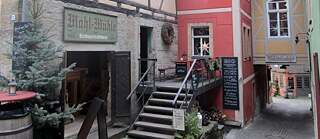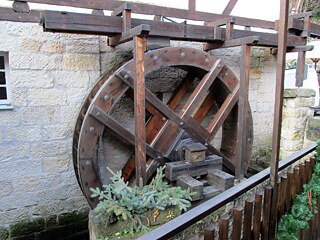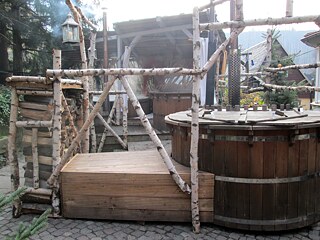Sustainable Tourism
Schmilka – an organic enclave in the Saxon Switzerland national park

The tiny village of Schmilka is located in the heart of the Saxon Switzerland national park, beside the Elbe river, right on the German-Czech border. Over the last 20 years Schmilka has gradually been transformed into an all-organic enclave. The aim is to create an integrated blend of sustainability, regional self-sufficiency, and locally made artisan organic food products.
By Marina Bierbrauer
On a one-day tour of the village, I was able to take a closer look at the local sights and attractions. Like virtually all the towns and villages in the region, Schmilka is easily accessible by rail. The train deposited me on the opposite bank of the Elbe, from where I could look straight across at the 69 small cottages nestled beside the narrow road winding its way up the hill from the river bank. I crossed to the other side on the “Lena”, a small historic ferry dating back to 1927.
Baking as they did 300 years ago
I start the day with a guided tour through the historic mill and the adjacent bakery. The building dates back to 1665, and is the village’s oldest surviving structure. It was lovingly refurbished in 2007. Today the visitor can watch the flour being ground and baked into delicious bread and pastries. The bread is baked in a traditional wood-fired oven, exactly as in the old days. As you enter the bakehouse you are greeted with the unique smell of fresh bread, and the warmth of the heat radiating from the oven.Seasonal organic produce from the local region
In the mill house I then warm up and try some fresh bread with a vegan lentil soup. The goods on display – cakes the size of cart wheels, sweet or savoury as you prefer, “miller’s loaves” and bread rolls – can be consumed on the spot or taken home to be enjoyed later. All products are organic certified, with ingredients mainly sourced from within the region, and in many cases locally grown as well. The goods produced vary according to the season, and also according to fluctuations in demand, to minimise left-overs at the end of the day and the resulting waste of resources. Along with the mill and bakery, the village also has an artisan patisserie and cake shop, and an organic brewery, all operated on these same principles.Modern-day reconstruction of a historic village
As I walk around the village, I start to pick up some more information on its history, and the background to what is happening there today. The impetus came from the businessman and private investor Sven-Erik Hitzer. He operates a number of historical tourism destinations and restaurants, and has received multiple awards for his activities in the area of heritage protection and tourism. He has had links with the Saxon Switzerland region since childhood, and for many years owned a holiday cottage in Schmilka. He saw the gradual decline in the local population and visitor numbers, not least because of two major floods, and watched the houses gradually falling into disrepair. So over 20 years ago, he started to buy up vacant buildings in the village, and to realise his vision of a sustainable organic enclave.The village’s half-timber cottages were progressively refurbished using the latest organic construction methods, while preserving their original charm. Energy is generated from solar panels and other renewable sources, and the waste heat is used to heat the village’s houses and buildings. The aim is for the village eventually to be self-sufficient in terms of energy. Overnight accommodation is available in the eco-hotel and a limited number of family-operated bed and breakfast establishments and holiday homes. No high-rise hotels here!
These changes have been mainly well received by the local population, who have all clearly benefited from the process. You can feel a real sense of common purpose here.
All-year-round tourist destination
Schmilka is on the Elbe cycle way, and is the starting point for numerous walks. Part of the Painters’ Trail (Malerweg) one of Germany’s best-known walkways, leads directly through the village. Like many of the small towns and villages in the national park, Schmilka is flooded with visitors particularly during the summer months. In spite of all the resulting benefits for the region, this can place major stress on the local infrastructure and fragile ecosystems. But Schmilka is determined to show that profit and sustainability can go hand in hand, and that sustainability can provide the foundation for a successful tourism industry.In recent years, to extend its appeal into the winter months, the concept of a “winter village” has been introduced, running from mid-November to mid-March. This helps to create permanent employment opportunities, even outside the peak season. After enjoying a sauna, and an invigorating cold water plunge afterwards, for example, visitors are invited to relax in a hot bath tub, with beer steam (Aufguss) if they so desire. Or they can opt to end the day with a delicious steaming hot glass of Glühwein, as I did.






